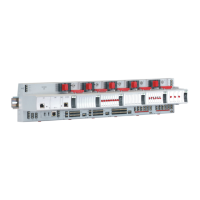Secondary controller failure.
Removal of the powered Secondary controller module from its IOTA.
Inserting any controller module into a powered Secondary IOTA.
Loss of a single FTE link to Primary controller.
Loss of a single IOL channel connected to Primary C300 I/O Link.
Data communication failures with Secondary controller during synchronization.
Become Primary command - BECMPRICMD
The Become Primary command is used to cause an unsynchronized secondary module to
transition into the primary role in the absence of a partner module. Specifically, this
command applies only if the unsynchronized secondary has no view to a partner module
across the redundancy cable and the primary IP address is not occupied.
8.7
Redundancy history
The C300 and Series 8 FIM support a table with 16 entries of redundancy history. There
are 3 columns representing redundancy history time, state, and reason. The controller
internally implements a circular list so that only the most recent 16 entries are retained
once the number of redundancy history exceeds 16.
RDNHISTTIME - Redundancy History Time. The system time captured at the time
the entry was added to the table.
RDNHISTSTATE - Redundancy History State. Indicates milestones with respect to
redundancy-related activities like redundancy role states, compatibility states,
synchronization states, user commands, sync abort indication, and role change
indication. Set to dashes "- - -" when entry not yet initialized.
RDNHISTREASON - Redundancy History Reason. Optionally indicates rationale
for the occurrence of the associated RDNHISTSTATE entries. Includes reason for
loss-of-sync, redundancy role change, commencing initial sync, and partner
incompatibility. Set to dashes "- - -" when entry not applicable (or entry not yet
initialized).

